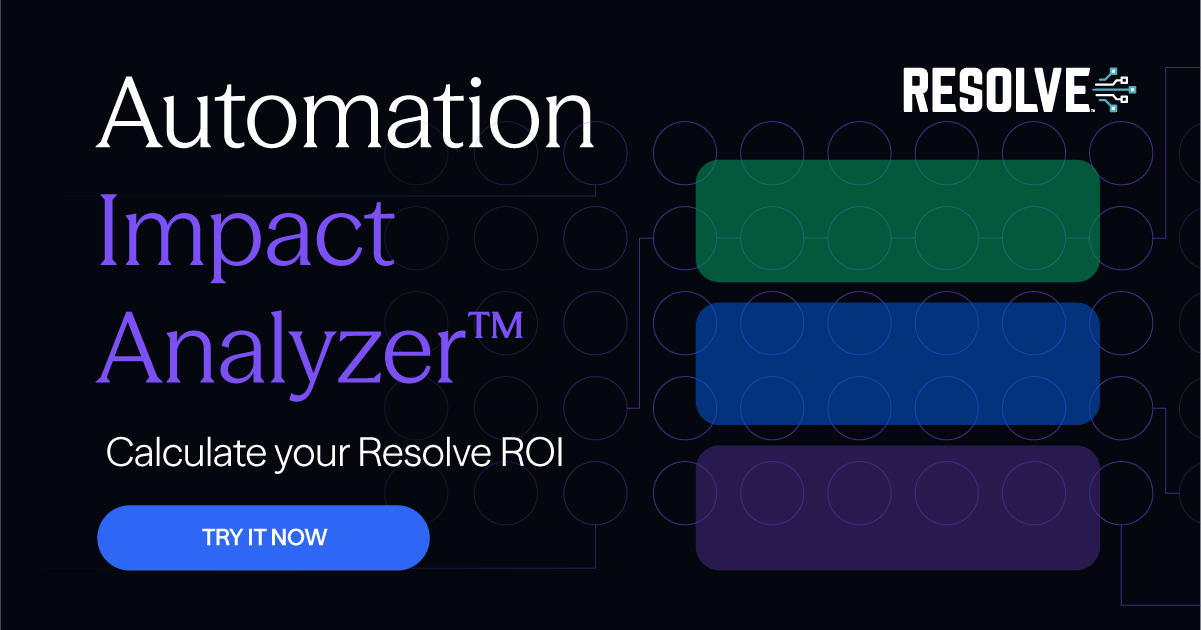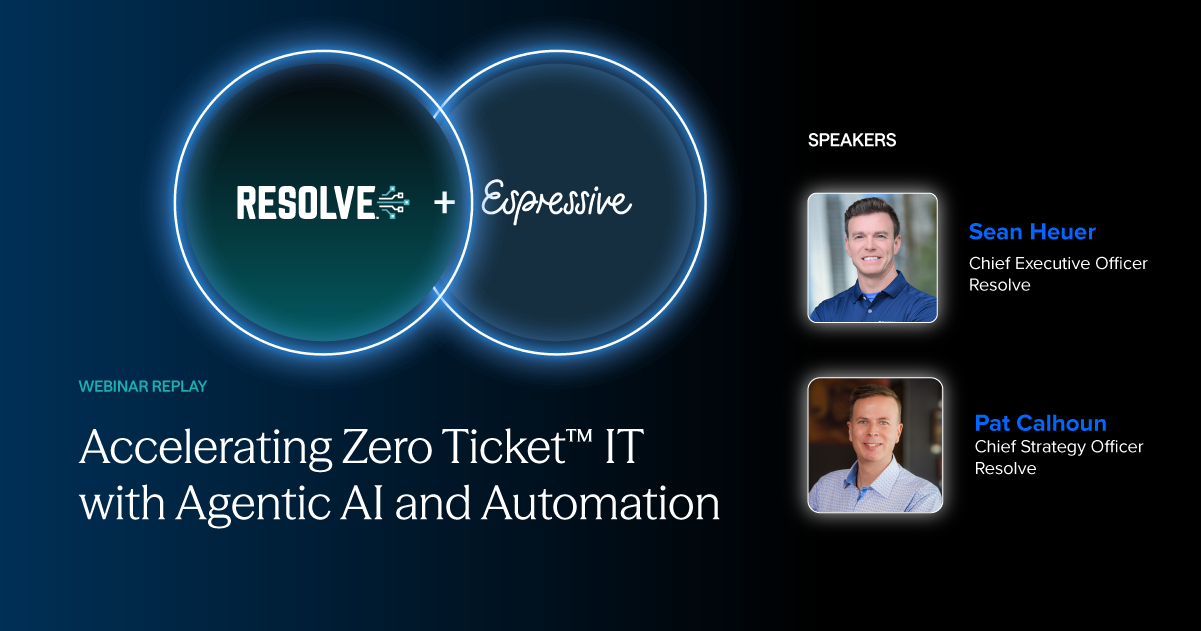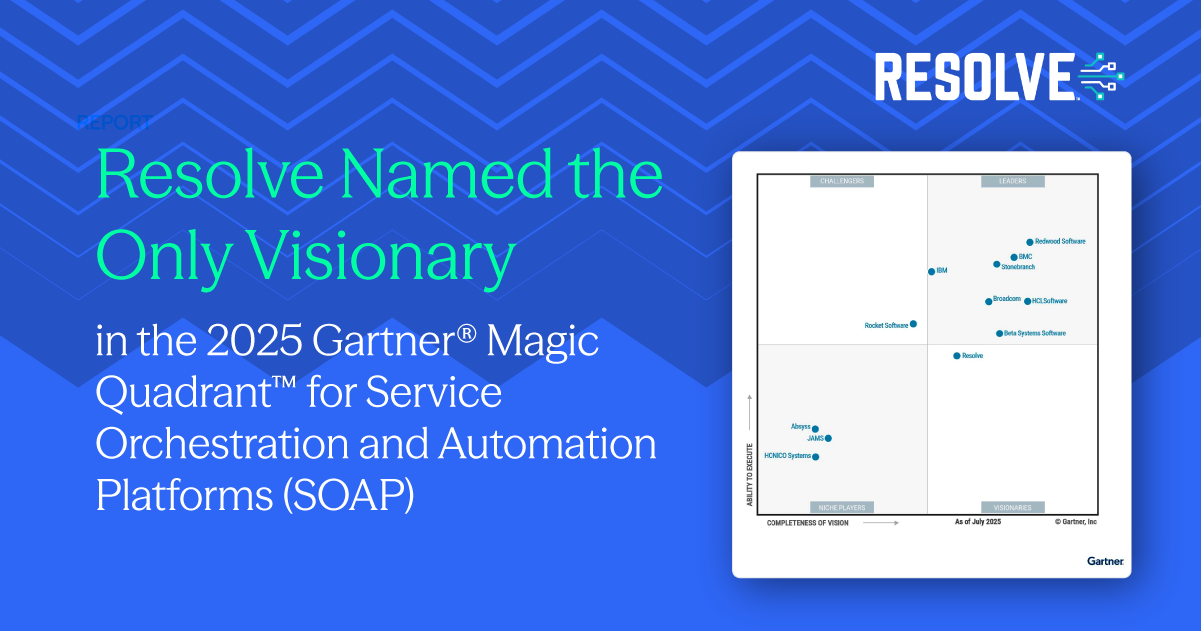
Automation KPIs That Matter: How IT Leaders Measure Real Impact
Subscribe to receive the latest content and invites to your inbox.
We work in a digital landscape where IT teams are expected to move faster, scale smarter, and deliver flawless digital experiences, automation is no longer optional; it's foundational. But while most organizations have started down the automation path, far fewer can answer the critical question: How do we measure success?
The problem isn't just a lack of metrics. It's that the wrong metrics are still steering the ship. Traditional IT KPIs (ticket volumes, SLA compliance, average handle times) were built for a reactive, human-centric service model. But the modern enterprise is shifting to something far more proactive: an AI- and automation-first model designed to eliminate the ticket, not just close it faster.
This is where automation KPIs come in: metrics that reflect how well your organization is moving toward self-healing infrastructure, proactive resolution, and the Zero Ticket IT future.
LEARN MORE: Industry Recognition Validates Resolve's Leadership in Agentic Automation
Why Legacy KPIs Fall Short in a Zero Ticket World
In legacy IT environments, the success of the service desk is often measured by how well it reacts:
- How many tickets were closed?
- Were SLAs met
- What was the mean time to resolution (MTTR)?
But in a world powered by intelligent automation, these metrics are relics of the firefighting era. In fact, a high ticket volume might be a sign of failure—a signal that your systems aren't preventing issues in the first place.
Zero Ticket IT reframes the question from "how quickly can we react" to "how well are we preventing, deflecting, and autonomously resolving issues before they disrupt the business?"
Automation KPIs: A New Measurement Model for IT Leaders
Below are the automation KPIs that forward-thinking I&O, ITSM, and NetOps leaders are using to measure success in 2025 and beyond. These metrics align directly with the goals of Zero Ticket IT: reducing manual effort, improving reliability, and accelerating innovation.
1. Automation Coverage
Definition: The percentage of repeatable tasks or known issues that are fully handled through automation.
Why it matters: This is your north star. It reflects how much of your operational workload has been shifted from people to machines. Organizations moving toward Zero Ticket IT aim to cover 60–90% of known workflows with automation, across both infrastructure and service requests.
2. Autonomous Resolution Rate
Definition: The percentage of incidents resolved without any human intervention.
Why it matters: This is where MTTR becomes MTTAR: mean time to autonomous resolution. The higher this rate climbs, the closer you are to a self-healing IT environment. It's a true indicator of maturity and platform intelligence.
3. Ticket Deflection Rate
Definition: The percentage of user requests and alerts resolved without generating a ticket.
Why it matters: This metric tracks your progress in keeping issues out of the ITSM queue altogether. High deflection rates, powered by virtual agents and event-driven automation, reduce operational noise and free up teams to focus on strategic initiatives.
4. Productivity Hours Reclaimed
Definition: The number of human hours saved through automation over a given period.
Why it matters: This KPI translates technical efficiency into a language executives understand: time. Whether it's hours saved by service desk agents or avoided delays for end users, this metric directly ties automation to business value.
New proof point: A Forrester study found that for every 1,000 employees, IT-related productivity loss can total $1.5M–$3M/year, and most of it is due to waiting, not fixing. Automation doesn't just solve problems faster; it prevents the wait altogether.
5. Workflow Reuse Rate
Definition: The percentage of automations built once and reused across multiple teams or use cases.
Why it matters: This shows how well your automation program scales. Reusability reduces redundancy, accelerates time to value, and amplifies the return on each automation investment.
️ 6. Automation Time to Value (TTV)
Definition: The time between identifying a new use case and deploying a live automation.
Why it matters: Automation that takes six months to launch is barely better than manual work. This KPI reflects the agility of your platform and the effectiveness of tools like Resolve's low-code designer and AI agent "Jarvis," which can auto-generate workflows from natural language inputs.
7. Incident Prevention Rate
Definition: The percentage of incidents proactively resolved based on signals from observability, AIOps, or predictive analytics.
Why it matters: This is the heart of the machine front door, where system events trigger remediations before users even notice. It's the hallmark of a mature Zero Ticket IT implementation and demonstrates the business value of event-driven, contextual automation.
8. Business Uptime Impact
Definition: The percentage improvement in service uptime or SLA attainment due to automation.
Why it matters: Downtime is expensive. If your automation efforts are truly working, they should show up in business-level outcomes: higher availability, faster remediation, and fewer escalations. Use this metric to make the case for continued investment to the CIO and C-suite.
Making KPIs Actionable: What Resolve Brings to the Table
Tracking automation KPIs is only valuable if you can act on them. This is where Resolve's Agentic IT Automation Platform stands out. With a combination of pre-built integrations, AI-powered agents, and ROI dashboards, Resolve helps IT leaders:
- Visualize and track automation coverage across ITSM, I&O, and NetOps
- Analyze ticket and event histories to pinpoint the next high-ROI automation target
- Measure autonomous resolution and deflection rates in real-time
- Empower teams to build and reuse workflows without writing code
- Showcase impact to the business with executive-friendly dashboards
Tools like RITA (Resolve Intelligent Ticketing Agent) and Jarvis make Zero Ticket IT real; not just as a vision, but as a set of measurable, repeatable outcomes.
Final Thoughts: KPIs That Fuel Transformation
The shift to Zero Ticket IT is not just about eliminating tickets. It's about evolving IT into a strategic function that's defined by speed, scale, and resilience. Traditional KPIs won't get you there.
By adopting automation KPIs, enterprise IT leaders can finally measure what matters: prevention over reaction, intelligence over manual labor, and outcomes over activity.
Because in the era of agentic automation, your metrics should do more than report the past—they should guide you to the future.






